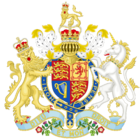Petroleum Act 1987 facts for kids
| Act of Parliament | |

|
|
| Long title | An Act to make provision in respect of the abandonment of onshore installations and submarine pipe-lines and in respect of safety zones around offshore installations; to amend the Petroleum (Production) Act 1934 and to make provision in respect of licences under that Act; to amend the law relating to pipe-lines; to repeal sections 34 to 39 of the Petroleum and Submarine Pipe-lines Act 1975; and for connected purposes. |
|---|---|
| Citation | 1987 c. 12 |
| Introduced by | Viscount Davidson (second reading) (Lords) |
| Territorial extent | United Kingdom Continental Shelf |
| Dates | |
| Royal assent | 9 April 1987 |
| Other legislation | |
| Amended by | Petroleum Act 1998 |
|
Status: Amended
|
|
| Text of the Petroleum Act 1987 as in force today (including any amendments) within the United Kingdom, from legislation.gov.uk | |
The Petroleum Act 1987 is a law made by the Parliament of the United Kingdom. It updated the rules for managing oil and gas platforms and their operations in the sea. This law was very important for making sure these big structures and their underwater pipes were removed safely and in an organized way when they were no longer needed.
Contents
Why Was This Law Needed?
Before this law, there wasn't a clear plan for what to do with old oil and gas platforms. Removing all the platforms on the UK continental shelf was going to be very expensive. In 1984, it was estimated to cost around £6 billion!
The government wanted to find ways to save money. They thought that maybe not all parts of the platforms needed to be completely removed. But they still needed clear rules to make sure any removal work was done safely. This was important for:
- Oil companies that owned the platforms.
- Fishermen and sailors who used the sea.
- The UK's promises under international law.
- Taxpayers, as the government wanted to manage costs.
The owners of the platforms or pipelines were responsible for removing them. The new law made sure there were consequences if they didn't follow the rules. It also gave the Secretary of State (a government minister) the power to create detailed rules for how platforms should be taken apart.
Updating Oil and Gas Rules
The law also aimed to update other important rules for the oil and gas industry.
- Royalty Payments: It made it easier to manage the payments (royalties) that oil companies paid to the government. It also allowed for some of these payments to be returned to companies to help with the costs of removing platforms.
- Licensing: The rules for getting permission (licences) to explore for oil and gas were extended to include the waters around Northern Ireland.
- Safety Zones: Before this law, a special order was needed to create a safety area around each platform. The 1987 Act automatically created a 500-meter safety zone around offshore platforms. This made the sea safer for everyone.
- Onshore Pipelines: The law also updated rules for pipelines on land, especially about insurance. It gave the Secretary of State the power to stop the use of any pipeline if there wasn't enough money to cover any damage it might cause.
What the Petroleum Act 1987 Does
The Petroleum Act 1987 became law on April 9, 1987. It has 32 sections, divided into four main parts, plus three extra sections called Schedules.
Main Parts of the Act
- PART I: Taking Apart Offshore Platforms
- This part (Sections 1 to 16) deals with how companies must plan to remove their platforms. It covers who needs to submit these plans, how they get approved, what happens if plans aren't submitted, and how the government can make sure the work is done. It also talks about making sure companies have enough money for the removal.
- PART II: Getting Licences
- This part (Sections 17 to 20) talks about existing and future licences for oil and gas exploration. It also extends these rules to the waters near Northern Ireland and requires companies to submit annual reports.
- PART III: Other Important Rules
- Safety Zones: Sections 21 to 24 explain how safety zones are automatically created around platforms and what happens if someone breaks the rules in these zones.
- Pipelines: Sections 25 to 27 cover rules for building pipelines, making sure companies have funds for any damage, and how the government can get rights to land for pipelines.
- Refineries: Section 28 updated rules about building oil refineries.
- PART IV: Extra Details
- Sections 29 to 32 cover things like how the government pays for the Act, which older laws it replaces, when the Act started, and where it applies.
Schedules (Extra Sections)
- Schedule 1: How existing licences were changed.
- Schedule 2: Changes to standard rules for licences.
- Schedule 3: A list of older laws that were cancelled by this Act.
How the Act Changed Things
The 1987 Act created a clear set of rules for taking apart offshore oil and gas platforms in the UK.
- The first time a platform was approved for removal was in 1988. This was for the Piper Alpha platform, which was removed by being toppled over.
- In 1991, the first floating production facility (a type of platform that floats) called Crawford FPF was approved for removal.
- The first fixed steel platform to be completely taken apart and brought to shore was the Forbes AW platform in 1993.
What Happened Next
Some parts of the 1987 Act were later replaced by the Petroleum Act 1998 on February 15, 1999. This included Parts I and II, and Section 28 of Part III.
See also
- Oil and gas industry in the United Kingdom
- North Sea Oil
- Petroleum Act

